|
Fresh out of school, Klemm began doing farm income tax preparation
in a back office of the DeWitt County Farm Bureau. He later joined a
partnership with Charles Engelhart, who was retiring from the Logan
County Extension. From there, Klemm Tax Service has evolved into
what it is today.
Klemm is also a farmer. He grew up on the family farm in DeWitt
County, just a stone's throw away from the Logan County line. The
base of his 1,000-acre operation is the few hundred acres his
grandfather purchased in 1905. Klemm's father farmed the ground, and
now Robert does.
Today, Klemm's son John works for Farm Credit Services in Sherman
and helps out on the farm as he can. Daughter Olivia teaches in
Clinton. Farming is dear to her, and she comes home once in a while
to get her "farming fix." Youngest son Aaron is a junior at Monmouth
College, studying sports business. He works on the farm during the
summer months. Wife Patty is an on-the-farm wife and helper who
works beside Robert to keep all the family businesses going.
In addition to grain production, the Klemms have a cow/calf
livestock operation.
Back in the day, the software of the grain farmer consisted of a
ledger book, a No. 2 pencil and some type of container to hold all
the receipts, check stubs, scale tickets and fertilizer bills. But
time has changed everything from the means in which we keep records
to the records we keep.
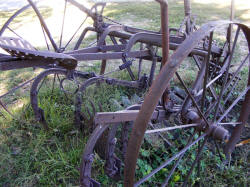
"I can remember the two weeks or so, growing up as a child, my
dad's record keeping in January or February," Klemm said.
"Everything was laid out on the dining room table in appropriate
piles, and you didn't walk through the dining room quickly for fear
of disturbing the piles. And it worked!"
Klemm noted that in his business he still sees the farmer with
his ledger and stack of receipts, and as long as the records are
accurate and honest, it really doesn't matter to him as a tax
professional how the producer came up with his numbers.
But using computer technology can make things easier for the
producer and can also add some interesting and vital twists to
accounting and accountability.
"The thing that needs to be identified more than anything is that
we now have to know where we are financially at all times," Klemm
said. "And that can be accomplished in many ways, but it is the
details that are the important things."
Klemm said the pencil-and-paper method is still fine if it works
for the producer. The advantage with the computer is the capability
to do more detailed analysis quickly.
"When I write a check on the computer, it automatically changes
my bank balance, my cash flow, my inventory and more. For the
producer, this is more conducive to keeping a constant, accurate
detail of the farm finances," he said.
Another key to managing the farm is the technology in the combine
or tractor as the farmer moves through the field. For tax purposes
it has no real value, but what it does do is help the farmer monitor
productivity of his acreage in more finite sections.
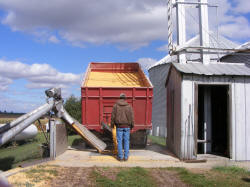
Klemm said this can be especially important for those who are
acquiring land on a regular basis through ownership or rent
agreements.
"My dad and I have been farming the family acreage for our entire
lifetimes, and we know and can share the history of the fields," he
said.
But that family acreage is only a portion of the whole farm
today. Klemm said that as he takes on new acreage, he doesn't have
that history in his head. Instead he has it in his computer.
He noted that as he goes through the field, he uses "tags" in his
software to note specific field conditions. This benefits him in the
fall when he goes to harvest and sees a significant change in the
yield in a specific area.
"I can look at my data and see what went on in this field in the
spring," he said.
Klemm said this starts the creation of a history that can be
tracked on the computer, just like he tracks the family farm in his
head.
In addition to being of value to the owner, it could also be of
value to the buyer of a piece of land. This documented history can
help a land buyer or even a renter to gain an understanding of what
might come out of that field. For a buyer, this is important because
he wants to invest dollars into productive acreage. For a renter,
this can help determine whether the land is worth the cash rent,
whether the rent should be on some other basis such as
sharecropping, or if he should just say "pass."
Klemm said another asset of the data tracking system is in the
stewardship of the land. Farmers today are environmentally aware.
They don't want to produce chemical runoff in our waterways. Knowing
and understanding the natural drainage of a field can help determine
what type and how much chemical they should use for the field and
the crop, with as little waste or residue as possible.
The physical landscape of the central Illinois farm has changed
over the years, Klemm noted. He said he has spent a great deal of
time traveling within his accounting service area. He noted that in
the earlier days of his travels, he could visually notice the
difference in farming practices in the field. Those practices
related directly to how the farmer was managing his business.
Today, one sees a great deal of consistency in the fields. One
can seldom quickly identify where one farmer stopped and another
began.
This is a sign of the progress and change in farmers' management
skills. Many times this goes back to the records and how the farmers
are doing business. The records reflect what is going on in the
field, and the producers need to be constantly watching the changes
in the field and adjusting their management program accordingly.
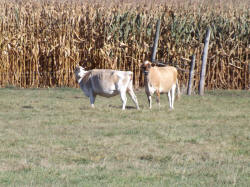
This is the same change, Klemm said, that has taken central
Illinois farmers away from the livestock industry and alternate
crops. He remembers the day when baling hay was a big part of the
farm business, and now it is not. Wheat has also gone to the wayside
in many rotations. Cattle farms are dwindling, and hog operations
are becoming more like manufacturing plants than just a matter of a
few hundred head on the family farm.
[to top of second column] |

He said one of the big differences between now and then is the
size of the family farm. Back in time, the family farm was 400 to
500 acres. Today's farms are 900 to 1,800 acres and even larger, and
they are much more of a full-time job.
"That is why they have to analyze their business continually and
make sure they are profitable," he said.
Klemm said safeguards are also an important part of the farm
today.
For the farmer, the statistics of bushels per acre or price per
bushel are significant, but not necessarily the key to success. The
reason being, when yields are high, prices per bushel will go down,
and when yields are low, the price will inch up. During harvest,
prices typically drop; but in the spring, depending on the weather,
prices can take some big jumps. Therefore, the farmer doesn't look
only at what the price per bushel will be, nor does he consider what
he hopes the yield will be in bushels per acre.
The secret is to know and understand what the profit per acre
needs to be on the family farm, and to use whatever
options are workable in order to protect that needed profit.
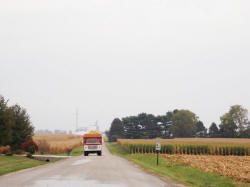
Klemm said the profit need is beneficial in choosing the right
hedging options. Those options could include crop insurance, or
contracting or actually hedging on the market. He said each person
is going to consider this and decide for themselves what options
they want to use. And, the bottom line is, as long as it is
successful, no one can really say that one method is better than the
other.
Klemm said that as a tax accountant, doing clients' taxes is
perhaps the easiest and simplest part of his job. The real challenge
is to know, understand and share effectively the changes that are
coming down through the government on tax laws and other issues that
will affect the Midwest farmer.
Hot-button words right now in Illinois and all across the country
are "Obamacare," or the federal health insurance plan. Klemm said he
has spent many hours studying this and trying to translate it into
how it will affect his clients.
He noted one point that few may know. He said it is his
understanding from what he has read that the health care laws, while
not specifically a tax issue, will be monitored by the Internal
Revenue Service for compliance.
He said in most cases, this is going to have little effect on the
family farm. The exception will be for the producers who hire more
than 50 full-time or full-time-equivalent employees. Full-time
equivalent basically means that every employee could be a
part-timer, but if there are enough of them that the hours they work
equal 50 full-time employees, then that farm will have to comply
with health care mandates.
What may change, though, is the ability of the producer to afford
health insurance for himself and his family. While Klemm said he has
yet to see anything concrete on what the insurance rates are through
the Illinois Health Insurance Marketplace, the idea behind the
health care law is to make private ownership of health policies
affordable for everyone.
On the family farm, up until now, many times a spouse will go to
work for a firm or company that can offer affordable insurance
through a payroll deduction group plan. These changes could mean
that the spouse could have the option of staying on the farm and
becoming a more integral part of the operation.
Klemm said producers in the higher income brackets will have some
new taxes to deal with effective Jan. 1, 2014. One will be a 0.9
percent additional Medicare tax, and another is an increase in the
tax on net investment income.
Klemm said the tax on net investment income is for the very
high-income brackets. It won't affect a large number of farmers, but
the real concern might be for those who are entering retirement and
see lower input costs in the last year or two, greater income due to
the sale of equipment no longer needed, and even land sales.
Klemm said those who are looking at retirement down the road in a
few years should be looking at this now, evaluating what they have
and how they will manage their exit from farming.
How the farmer addresses this, Klemm said, is going to be a
personal decision. There are options to begin prior to retirement to
spread out the income. He said that in the later years of life, one
thing that changes could be that the on-the-farm debt falls, leaving
more cash on hand. Instead of pocketing that profit and paying the
taxes on all of it, an option could be to invest a portion of the
profit in a retirement plan for future use and future tax
obligations.
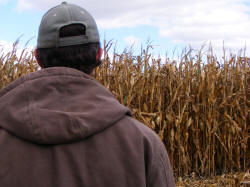
So, in the end, does Klemm have a crystal ball? Can he tell you
what to do to be profitable? Can he tell you how to prepare for
every contingency that may come along?
No, he doesn't have a one-size-fits-all system to help make a
farmer profitable, but he does know this:
"Things are going to change. I don't know what the changes will
be, but I know they will come. You have to be willing to look at the
options and evaluate how they could fit into your operation," he
said.
"Does that mean you have to change? Not necessarily, but you have
to be able to maintain the competitive edge. And that is where it
goes back to the necessity of evaluating those records, looking at
your true net positions and what your true net income is."
[By NILA SMITH]
|